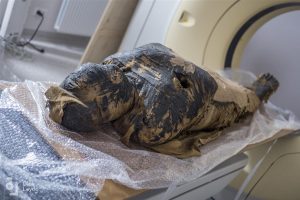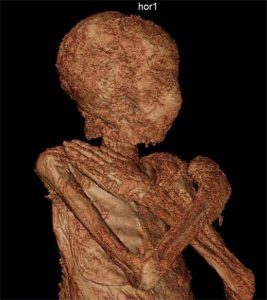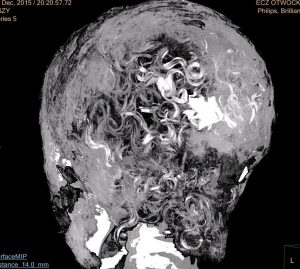The mummy of an Egyptian priest named Hor-Jehuti (pl.: Hor-Dżehuti) underwent modern analysis, involving computer tomography scans which revealed that the mummified individual was in fact a woman. The discovery was made while conducting the interdisciplinary Warsaw Mummy Project. Scientist involved in it informed about the discovery during the 9th World Congress on Mummy Studies in Lima this week.


The CT scan revealed the mummy of the supposed priest contained the remains of an individual of a very delicate physique, unusual for a man. Moreover further analysis revealed that the mummy lacked a penis, which in normal conditions was carefully mummified by ancient Egyptians. It is often found well preserved.


Thanks to the CTscan the scientists involved in the study Marzena Ożarek-Szilke, Wojciech Ejsmond and Kamila Braulińska, the coordinator, created a digital 3-D reconstruction of the female’s body. The scans revealed her long curly hair reaching the shoulders and mummified breasts. Other anthropological measurements also indicated that the body belonged to a female.

The National Museum in Warsaw, where the mummy is kept formerly identified the remains as male priest living between the first half of 1st century BC first half of 1st century AD. He was also a scribe and administrator in the region of Medinet Habu temple in Western Thebes, and also a priest of Horus-Thoth the local deity. The newest evidence shows that the mummy might be older than than and the current identification needs to be changed.

Newest analysis weren’t able to reveal the woman’s cause of death. But her age at time of death was possible to be established at being 20-30 years old. The mummy was kept by the National Museum since 1919 after being brought to Poland during late 19th century. Its sarcophagus contained hieroglyphic writing indicating that the person was a male priest, which turned out to be untrue only through recent advanced research.

(after Warsaw Mummy Project, Olek Leydo, Nauka w Polsce , RP.pl & Radio ZET)